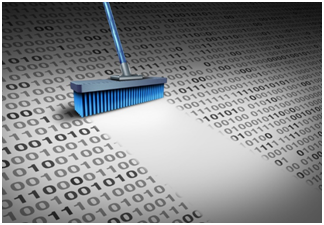When you’re having a busy day and trying to get through work and other digital tasks as quickly as possible, the last thing you need is your computer crashing, freezing or slowing down to a crawl. Unfortunately, though, this is an issue that all of us usually have to contend with at some time.
Rather than simply grumbling to yourself and threatening to throw your device in the bin, note that there are proactive steps you can take to keep your computer running optimally. Read on for some ways to get your computer in tip-top shape today.
Delete All Unnecessary Programs
Unnecessary programs are taking up space on your computer and causing it to use additional processing power on a daily basis. Most people have dozens of programs on their device that they forgot they ever put on there and haven’t used in years or that came pre-installed on the computer by the manufacturer.
As such, there’s no harm in getting rid of these, as you won’t even miss them. Additionally, your computer will run better without these extra programs running processes in the background as the device loads (which happens whether they’re open and in use or not).
To reduce this load on your device, head to the“Programs and Features” section on the Control Panel. In this spot, you’ll find the long list of software installed on the computer. Go through this carefully to see what you can delete.
Take Advantage of Cleanup Tools
While there are numerous steps you can take manually to optimize your computer, keep in mind that there are also some great tools on the market that you can download to help you out. For example, there are many excellent cleanup tools (both free and paid) specifically designed to look through computers for old files to delete. For instance, if you have an Apple computer, check out Dr. Cleaner, which is popular with Mac users.
Get Some More Storage
Your computer is probably running slowly and freezing on a regular basis simply because it doesn’t have enough storage capacity to handle everything you’re trying to do. A quick fix, then, is to add more storage.
There are two types of storage you can boost your gadget with. For starters, check out your permanent storage, or what’s more commonly referred to as the hard drive. If you notice that it’s at 80 percent or higher capacity, it’s time to upgrade. While the level of additional storage you add to your computer will depend on your needs (you’ll particularly need a lot of storage space if you collect lots of photographs, movies, and other large files), a capacity of 1 terabyte or more is best for most users.
You should also consider adding more temporary storage to your computer. This RAM (Random Access Memory) is what is used when programs handle the tasks you set them. Nowadays, most people end up having many different programs open and running at once, which requires a high RAM level.
If you don’t boost RAM, you’ll notice your computer slowing down, freezing and even crashing. This is especially the case any time you’re using big files and/or working on many things at once. To add more RAM to your computer, all you have to do is pop in more memory sticks. Again, while the level of additional storage you need is dependent on your needs, most people find that adding 4 gigabytes works well enough.
Run Updates on a Regular Basis
If you don’t take much notice of the “Update” alerts, it’s likely your gadget is slowing down and not running optimally because it has old, outdated versions installed with new, incompatible data. If you don’t bother installing the latest editions of software, operating systems, programs, browsers, plugins, apps and so on, your computer won’t run at its best. To keep it in tip-top shape, then, make it a habit to install new versions of items as soon as they become available. Better yet, set up your computer so systems automatically update when new options come in.
Follow these steps today and you will soon have a computer that is “behaving” when you need it to. This will save you from buying a new device right now since you’ll get a lot more life out of your current one. Just like a home, a car or our bodies, computers need to be maintained and cared for. Luckily, though, this doesn’t take a huge amount of effort or money.



